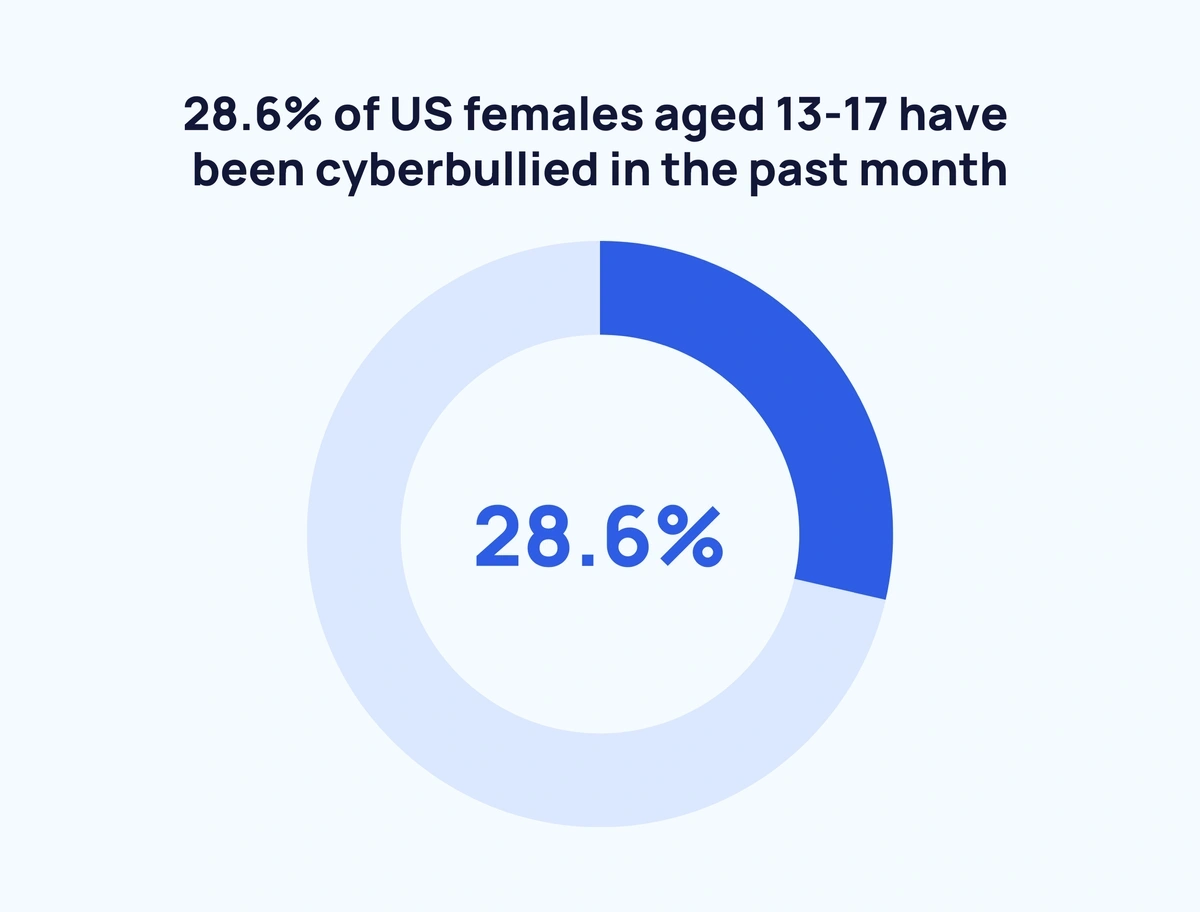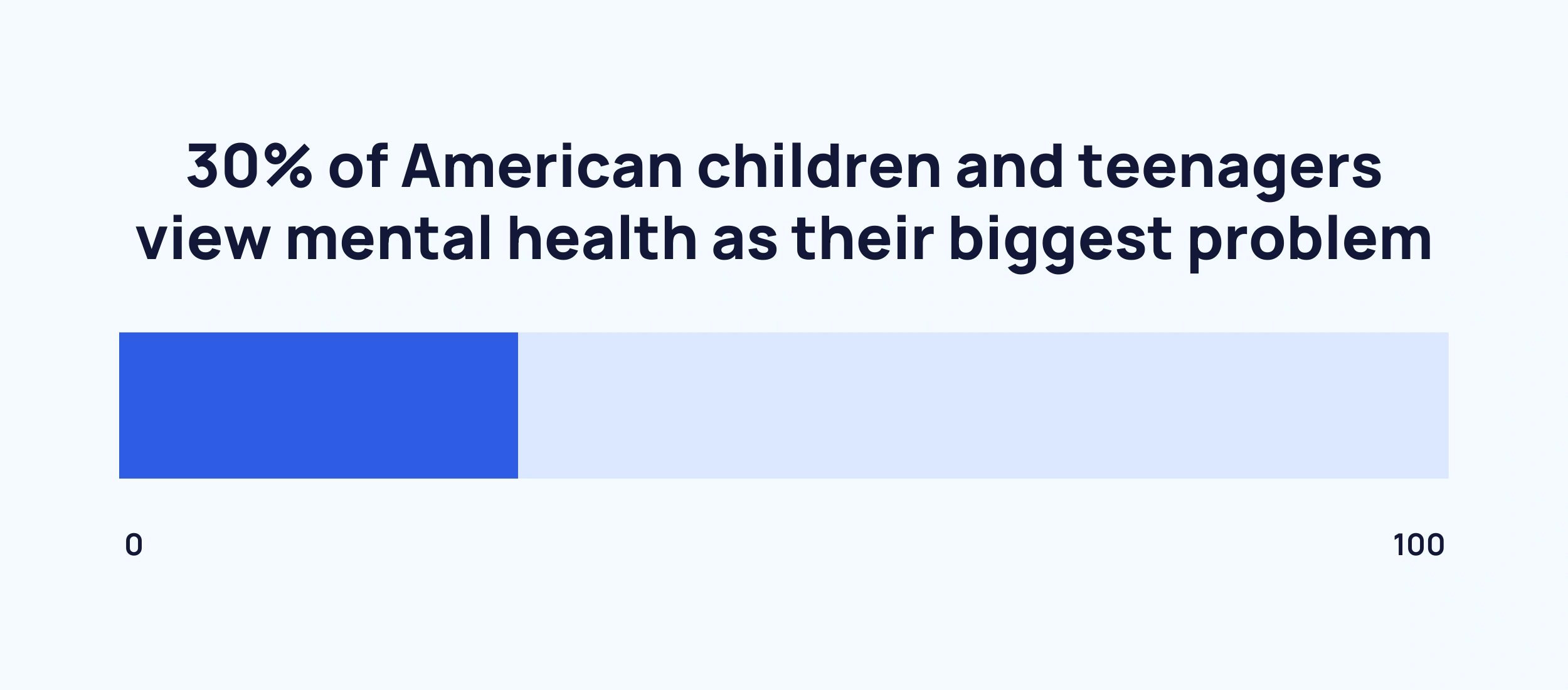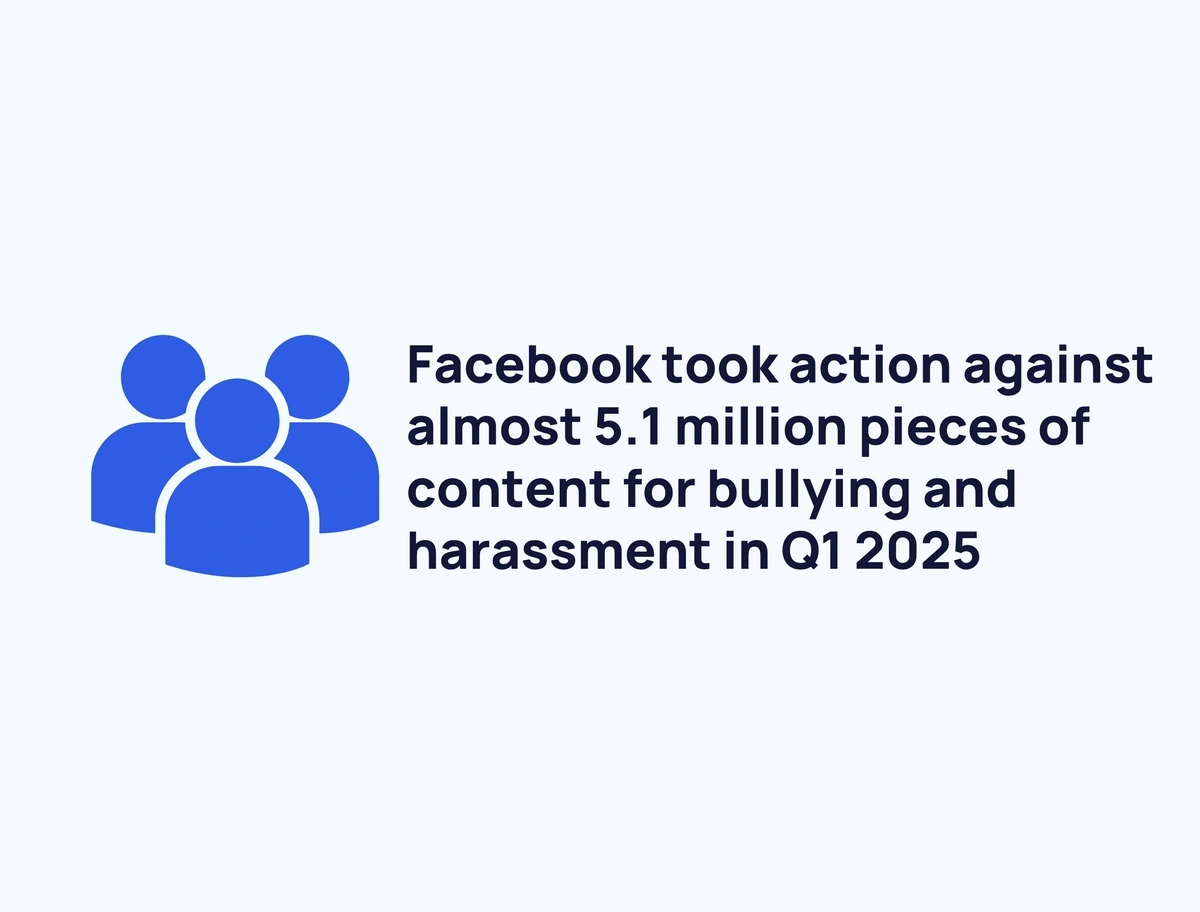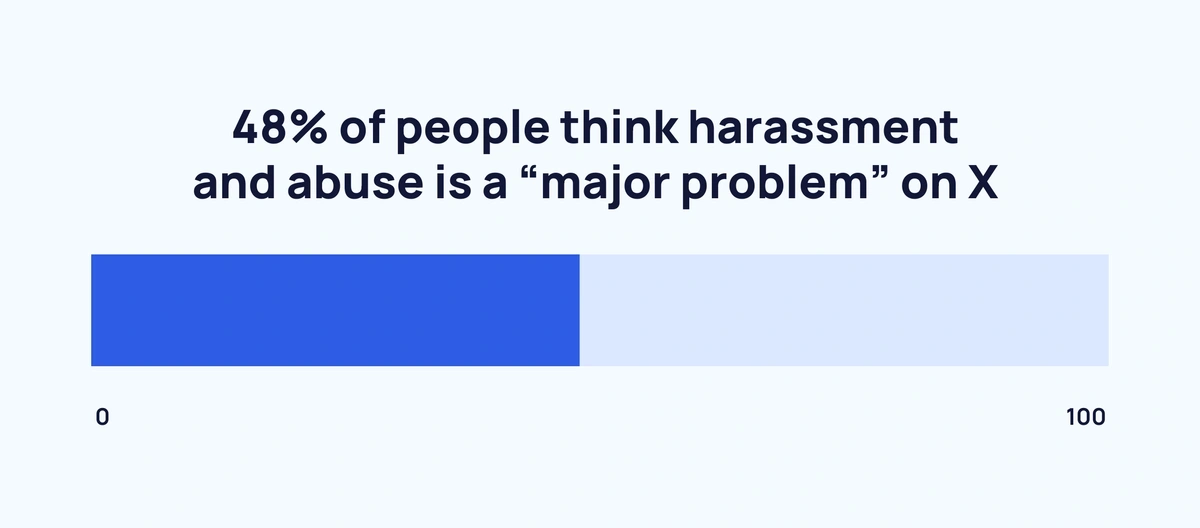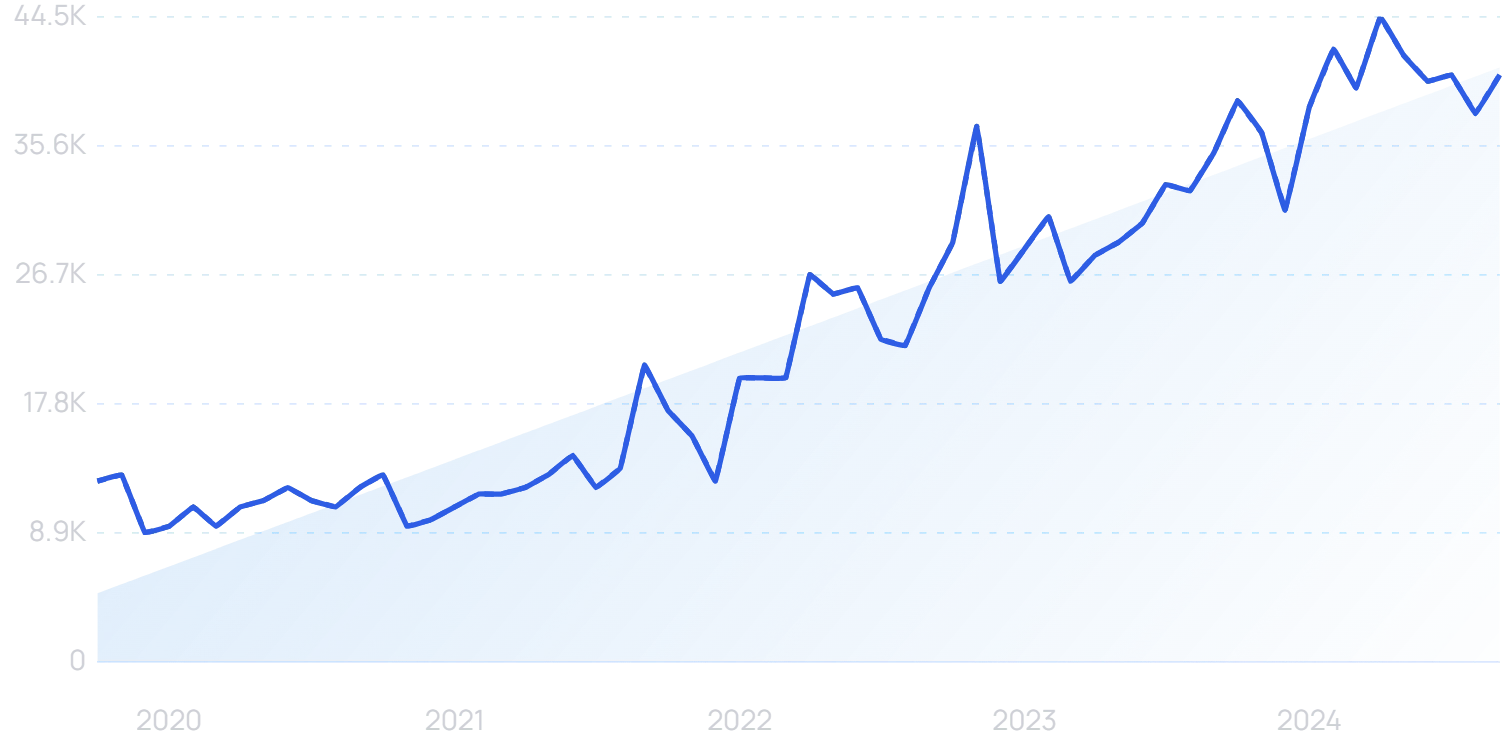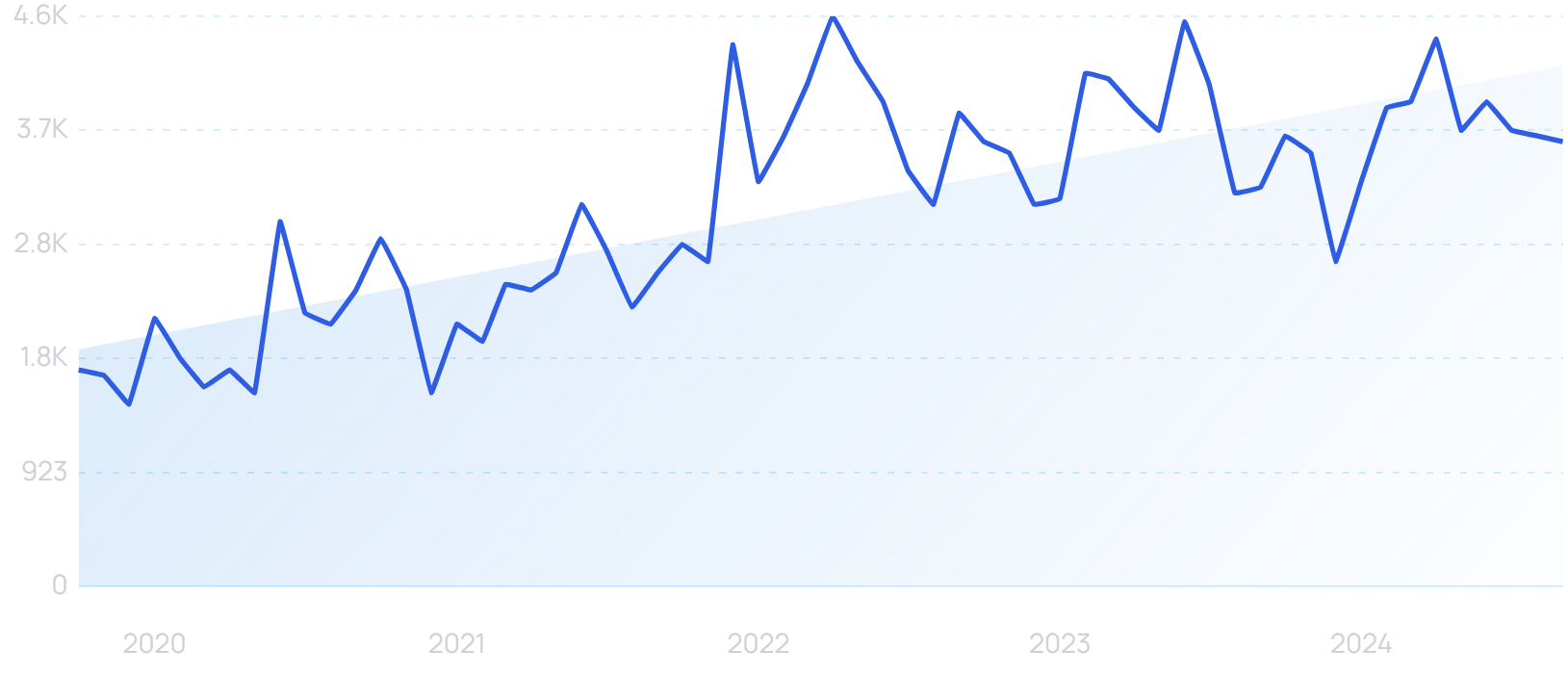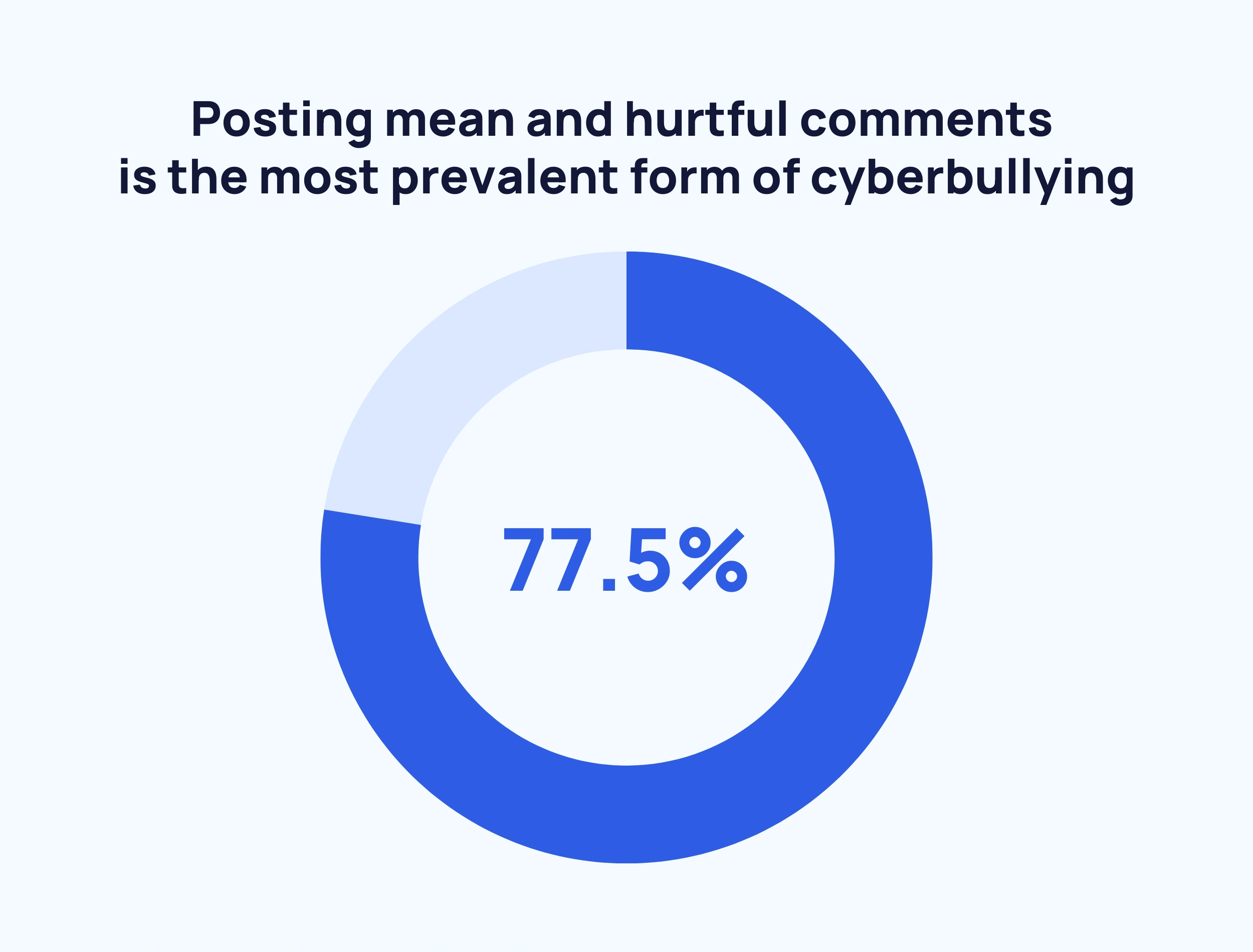
18 Cyberbullying Facts & Statistics (2025)
In 2025, over 26% of American teenagers had experienced cyberbullying over the previous 30 days.
Based on several trends, these numbers are likely to increase as time spent online continues to rise.
A generation ago, bullying could generally at least be escaped at home. Today, bullies can reach their targets 24/7 — through social media, text messaging, email, and online gaming. For victims, cyberbullying can cause intense mental, emotional, and physical trauma.
Below, we cover the most eye-opening cyberbullying stats worth monitoring.
Top Cyberbullying Statistics
- 26.5% of American teenagers have experienced cyberbullying within the last 30 days.
- Over 30% of teens have experienced cyberbullying at some point in their lives.
- 73% of girls and young women have received unwanted sexual content.
- 16% of students across the US have reported being bullied electronically.
- Black middle-school-aged cyberbullying victims are almost 135% more likely to consider and plan suicide than non-victims.
- 48% of US adults think harassment is a major problem on X (formerly Twitter)
General Cyberbullying Information
Cyberbullying is especially prevalent among teenagers, and girls in particular. But anyone can be affected.
Approximately 30% of teens have said they have been cyberbullied at some point.
Surveys show that more than 1 in 4 middle and high school students have been cyberbullied in the past 30 days (Cyberbullying Research Center)
28.6% of US females aged 13-17 have been cyberbullied in the past month, compared to 24.2% of males.
When it comes to lifetime figures, 59.2% of girls and 49.5% of boys in the age group have experienced cyberbullying.
Adults are affected by cyberbullying too. Among US gamers aged 18-45, 76% have experienced harassment. (Hate is No Game)
Six in 10 adult gamers reported experiencing “severe” harassment. Almost half reported discrimination, while more than a quarter detailed sexual harassment.
Meanwhile, in England and Wales, 21% of adults aged 20-24 have suffered at least one form of harassment in the last 12 months, with around 1 in 4 instances taking place online.
30% of American children and teenagers view mental health as their biggest problem (Bright Canary)
20% of teens view social media as the single biggest cause of the mental health crisis. The next-biggest category is bullying and discrimination (18%).
73% of girls and young women aged 13-21 have received unwanted sexual photos (Girlguiding).
Girls are especially vulnerable to receiving unwanted content online. 57% have also experienced sexist comments, way up from 24% in 2018.
More than a third of females in the age group have also had embarrassing photos of themselves sent to other people at school/university/work.
Cyberbullying Prevention
As cyberbullying becomes more prevalent, people are looking at governments and social media platforms to stop cyberbullying and punish perpetrators. But are their efforts meeting expectations?
44 out of 50 US states have specific laws to impose criminal sanctions for cyberbullying or electronic harassment (Cyberbullying Research Center)
All states offer legal protection that might apply to bullying or harassment, depending on its nature and severity. Most have now passed legislation specific to online behaviors.
Wyoming, New Mexico, New Hampshire, Nebraska, Minnesota and Maine do not currently expressly legislate for electronic forms of harassment.
Facebook took action against almost 5.1 million pieces of content for bullying and harassment in Q1 2025 (Meta)
This actually represents an improvement compared to previous quarters. Facebook took remedial steps against 6.7 million pieces of content found to be in violation of its bullying and harassment policies in Q4 2024.
By comparison, in Q4 2019, Facebook only took action against 2.8 million pieces of content.
Plus, many Facebook users spend a lot of time on the platform each day.
Semrush data indicates the average user spends 16 minutes 54 seconds on the site per visit. It's also estimated that Americans spend an average of 31 minutes per day on the platform.
That said, Meta notes that the amount of content actioned depends on the amount of offending content posted. Fluctuations do not necessarily reflect a better or worse response to bullying and harassment.
Want to Spy on Your Competition?
Explore competitors’ website traffic stats, discover growth points, and expand your market share.
Facebook reports that it finds and actions 88.9% of bullying and harassment before it is reported by users (Meta)
Facebook’s “proactive rate” has been rising rapidly. In Q1 2019, just 14.4% of all content found to be in violation of bullying and harassment policies was identified without first being user-reported.
On Instagram, the proactive rate is 96.9%. That’s a sharp increase from 35% in Q1 2020, with Meta becoming far less reliant on user reports to find content that breaches its policies.
48% of people think harassment and abuse is a “major problem” on X (Pew Research)
Concerns about the response to bullying on X (formerly Twitter) have been highly polarized since Elon Musk’s takeover.
Among Democrats, 65% of users now see harassment and abuse as a major issue on the platform, up from 50%. But only 29% of Republicans share that viewpoint, down from 41%.
None of the biggest social media sites receive “passing grades” in the Social Media Safety Index, although TikTok scores highest (GLAAD)
GLAAD tracks the safety of the LGBTQ community on leading social media sites. TikTok scores 67% (a D+ grade).
X ranks lowest, with a score of 41% (an F grade). Facebook, Instagram and YouTube each score 58%, while Threads is scored at 51%.
GLAAD’s core recommendations call on all social media platforms to improve content moderation, including training moderators in the needs of LGBTQ users.
“Content moderation” searches are up 250% in 5 years.
Cyberbullying in School
Ages 12-18 are critical formative years for children. Cyberbullying can put their mental health at risk and lead to unimaginably severe outcomes. With kids spending more of their time on smartphones, the risk of getting cyberbullied is higher than ever.
About 1 in 8 adolescents admit to cyberbullying others (WHO)
Boys (14%) are more likely than girls (9%) to admit to cyberbullying, although there has been a rise in both groups since 2018.
The striking number prepared to admit to cyberbullying may suggest a continued lack of awareness over the profound effects it can have.
Black middle-school age adolescent cyberbullying victims are 135% more prone to suicidal ideation and planning (JAACAP)
A survey of 7,643 Black middle schoolers found that cyberbullying victims were 135% more likely to have thought about suicide and made a plan.
Cyberbullying was also associated with a 91% higher rate of suicide attempts.
Bullied LGBTQ middle and high school students were 3 times more likely to attempt suicide in the past year (Trevor Project)
More than half of LGBTQ students reported physical or online bullying over the past year. Among that 52%, attempted suicides were three times higher.
LGBTQ children and adolescents are already more than 4 times more likely than their heterosexual peers to attempt suicide.
“LGBTQ therapy” searches are up by 158% in 5 years.
Cyberbullying is now more prevalent in the US than in-school bullying (Cyberbullying Research Center)
In-school bullying dropped off dramatically during the pandemic, while cyberbullying saw an increase. Interestingly, that trend has not yet reversed.
25% of middle school and high school students report experiencing bullying at school, while 26.5% have been exposed to cyberbullying.
Posting mean and hurtful comments is the most prevalent form of cyberbullying (Cyberbullying Research Center)
There is a perception of cyberbullying as relentless unwanted direct messaging. But while this may have held true in the era of texting, social media has changed things.
Among students to have experienced cyberbullying, 77.5% report that someone posted mean or hurtful things about them online.
The next most common forms of cyberbullying are:
- Spreading rumors (70.4%)
- Embarrassment or humiliation (69.1%)
- Intentional exclusion from a group chat (66.4%)
Repeated contact via text or online after being asked to stop was experienced in 55.5% of cases.
Adult Cyberbullying
Most attention surrounding cyberbullying is focused on children, and rightly so. But adults can and do get cyberbullied on a regular basis. These stats paint a picture of adult cyber abuse and the online harassment of elders.
In Canada, 44% of women and gender-diverse people aged 16-30 have been personally targeted by online hate speech (Canadian Women’s Foundation)
Adult cyberbullying often targets those with protected characteristics. In Canada, almost half of women and gender-diverse individuals have been personally subjected to hate speech.
A growth in cyberbullying of women in digital spaces has been a major contributor to a 72% rise in hate crimes since 2019.
The US federal government has committed $36 million to support victims of online abuse (White House)
The White House Task Force to Address Online Harassment and Abuse reports that the Biden-Harris administration invested more than $36 million in victim support services. Many of these services are designed for adults.
The task force has also invested at least $15 million into combatting technology-facilitated gender-based violence.
30% of Indigenous women in Canada experience unwanted behavior online (Canadian Women’s Foundation)
Sadly, whether it’s children or adults, cyberbullying often targets minority groups. In Canada, Indigenous women are disproportionately affected.
Meanwhile, 50% of bisexual women have received unwanted behavior online.
Half of Black adult gamers have received race-based harassment while playing online games (ADL)
The online gaming space can be particularly toxic, making it a prime arena for adult cyberbullying. Half of all Black adult gamers (50%) have been harassed because of their race.
That’s a 19-point increase in hate targeting Black adult gamers since 2020.
Wrap Up
Even online, words have the power to do real harm.
Cyberbullying affects people of all ages, genders, ethnicities, and sexual orientations. Fortunately, organizations like StopBullying.gov have been created to help combat this growing issue.
In our always-connected, perpetually online world, online harassment and cyberbullying have unfortunately become a normal part of life.
For related content on different kinds of harms in an ever-more digital world, take a look at How Many Cyber Attacks Happen Daily and Top Cybersecurity Trends.
Stop Guessing, Start Growing 🚀
Use real-time topic data to create content that resonates and brings results.
Exploding Topics is owned by Semrush. Our mission is to provide accurate data and expert insights on emerging trends. Unless otherwise noted, this page’s content was written by either an employee or a paid contractor of Semrush Inc.
Share
Newsletter Signup
By clicking “Subscribe” you agree to Semrush Privacy Policy and consent to Semrush using your contact data for newsletter purposes
Written By


James is a Journalist at Exploding Topics. After graduating from the University of Oxford with a degree in Law, he completed a... Read more

